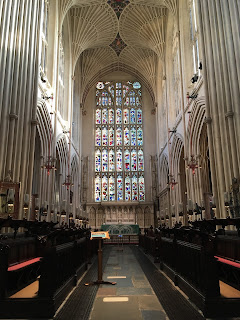Christmas Time in Bristol and Bath
Christmas markets have got to be one of the best things to do in the run up to Christmas; all the delicious food, roasted chestnuts, mulled wine. It's also a great place to buy those special, handmade gifts for friends and family and another great cause is that you are support independent sellers.
This year, we had decided to visit Bath and its Christmas markets, which is known to be one of the best Christmas markets in the UK. As part of the weekend, we decided to visit nearby Bristol to check out the sights, as I had never been.
Here are some of the highlights from the trip.
Bristol
Clifton Suspension Bridge
Designed by engineer I.K. Brunel, the Clifton Suspension Bridge sits on the cliffs of the Avon Gorge. Originally built in 1831 and designed for horse drawn carriages, the Clifton Suspension Bridge is now a toll bridge, receiving on average 11-12,000 vehicles a day. There is a Visitor Centre in Leigh Woods where you can find out more about the design and build of the bridge. Meanwhile on the Clifton side, there is The Clifton Observatory where you can see the Camera Obscura and Giant's cave. Amazing views of the bridge on the hill!
Brunel's SS Great Britain
Bath
Roman Baths
Today, you can walk around and see the different chambers and ruins. There is a museum with interesting artefacts from the Roman period.
I would recommend the audio guide as it gives you a better insight into the history of the Baths and how they were used everyday in Roman times. You can also taste a free sample of the spring water containing 43 minerals. I would recommend taking a sip, as the taste can be overwhelming.
Bath Abbey
Tower tours are available where a guide will take you behind the scenes of the Abbey to see the ringing room, bell chamber, the clock, and an opportunity to go on the roof where you can see views of the city. There are 212 steps to the Tower.
Sally Lunn's Eating House
A must go to when in Bath! One of the oldest houses in Bath and the home of the Sally Lunn bunn, a huge brioche style bun that can be eaten with sweet or savoury toppings. The story is that in 1680, Solange Luyon a Huguenot refugee had escaped persecution in France and fled to Bath. She began working in a bakery and using her skills created a light, brioche bunn. Her colleagues were unfamiliar with the French pronunciation and had called her Sally Lunn. The bunns grew in popularity so much, that people would travel to Bath to try the bunns. Today, the restaurant serves these giant bunns with all kinds of wonderful ingredients for breakfast, lunch and dinner, amongst other dishes. In the basement, you can see what is thought to be believed the original bakery, and you can also buy some bunns to take home, which we did.
The iconic landmark was designed by architect John Wood. The Royal Crescent is a row of 30 terraced houses laid out in a sweeping crescent. The Georgian houses are grade l listed buildings and used to house notable figures throughout history including William Wilberforce the British politician, Christopher Anstey a poet and Phillip Thicknesse, an author and friend of artist Thomas Gainsborough.
No. 1 Royal Crescent is a museum where you can see what it would have been like to live in the Georgian house during the period of 1776-1796.
Bath Christmas Market
With 150 wooden chalets around the centre, twinkling lights, Christmas Carols and the striking Bath Abbey in the back, you do feel a sense of magic in the air. The stalls were impressive, lots of beautiful artisan gifts from handcrafted jewellery, soaps, candles, speciality chocolates, ornaments, clothes, craft beers and cheeses from local and small businesses. Even the food was really tasty, we opted for some bratwurst.
All images and material on the Under the Olive Branch blog are copyright protected and all rights reserved. Images and material are for personal viewing and evaluation only and are copyrighted @Undertheolivebranch unless otherwise indicated.










